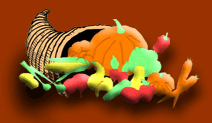A little about Biodynamic
Agriculture
Biodynamic agriculture originated with Austrian philosopher Rudolf
Steiner in the early 1920’s. His insight, observations, and understanding of nature’s formative forces have been
developed into what is known as anthroposophy.
As organic agriculture’s predecessor, biodynamic growing
uses many tools to achieve its purpose—to bring life and health back to our depleted soils through balanced applications
of homeopathic herbal medicines.
It is not witch craft or hocus-pocus. This is not
a trend or fashion. These practices are tried and true remedies that bring viable, indisputable truth to Steiner’s methods.
Part of any horticultural practice is a good farmer’s almanac.
Here at Valentino’s, we employ the Stella Natura calendar. It is created through a partnership from Camphill Village
Kimberton Hills—a 430 acre biodynamic farm in Pennsylvania.
This calendar is similar to a standard farmer’s almanac.
It offers advice on sowing, transplanting, and harvesting in an easy to follow guide. For each day of the year, lunar and
solar phases—constellations—planetary alignments—and other important information is provided.
Each day is dedicated to a specific type of plant, based on celestial
influences, historical climatic observations, and more. For example, if a day is marked with the word FRUIT, all work associated
with fruiting plants is suggested. The same is true for ROOT days, LEAF days, and FLOWER days.
**There is one exception. For LEAF bearing plants like lettuce,
cabbage, etc, seed sowing is for days marked LEAF—however, harvesting these plants on a LEAF day is not suggested. This
is because when influences from the moon or other celestial bodies direct energy toward the LEAF, water flows into the plant.
A water-laden plant will be fine for immediate consumption. But for storage purposes or eating a few days later, a head of
lettuce for example will not keep well if harvested on a leaf day. For all other plants, sowing and harvesting are best done
on coinciding days.
Special interest: Some growers ask how a cauliflower or broccoli is classified—a flower? a fruit? Historical
observations in biodynamic growing suggest that cauliflower and kohlrabi should be sown on LEAF days. Broccoli sown on a FLOWER
day will produce large firm heads. If sown on a LEAF day, broccoli will produce large numbers of small florettes instead.
Days indicating a barren time are best used for weeding, mulching, cleaning up the garden, or other activities.
Most important—the calendar is only a reference guide. Personal observations are the best way to achieve success in
a garden. Reconnecting with nature and Mother Earth is the goal.
Biodynamic Planting & Growing Calendar
May 2007
Date Plant Hours Lunar
cycle
22 Leaf 12a-12n
1st
23 Root* 12a-9a "
"
Fruit
9a-12m
24 Fruit 12a-11a
2nd
25 Root 1pm-12m
" "
26 Root all day
" "
27 Root 12a-1pm
" "
Flower** 1pm-9pm
28 Root all day "
"
29 Flower 10a-12m
" "
30 Flower 12a-7pm
" "
31 Leaf all
day Full moon

